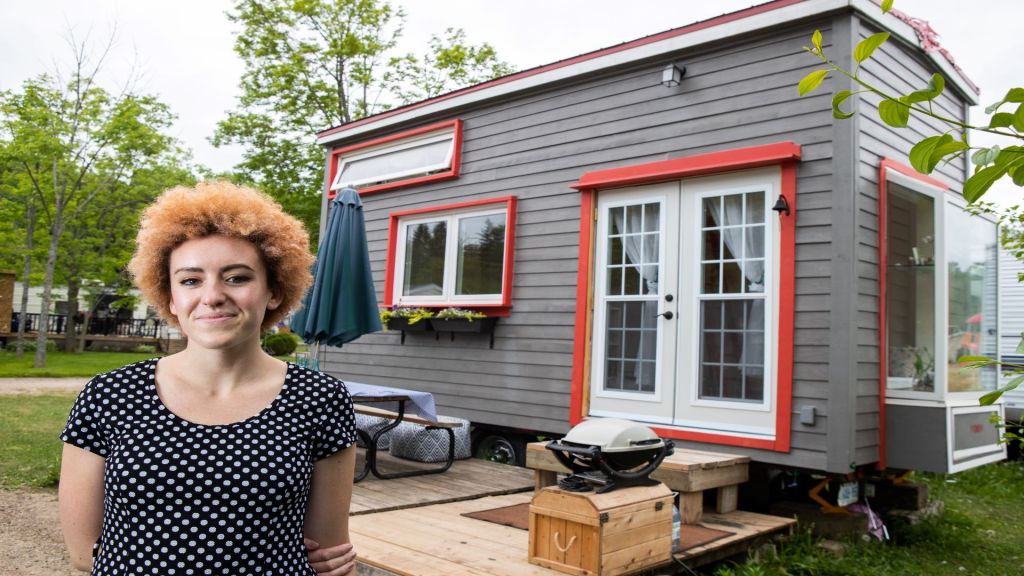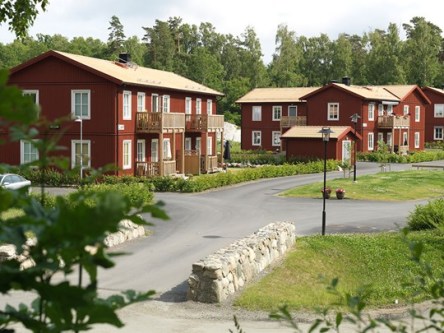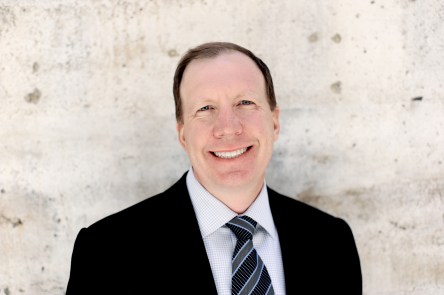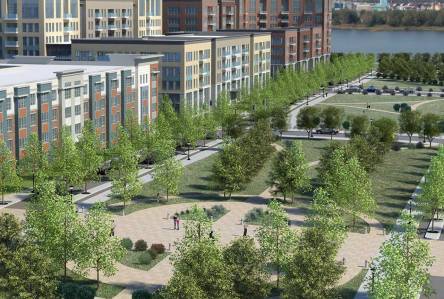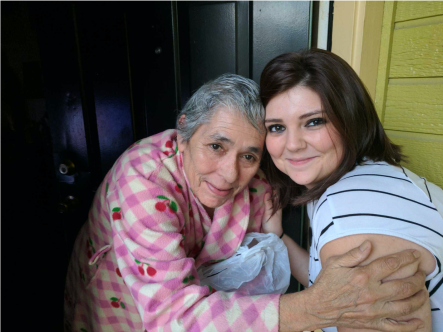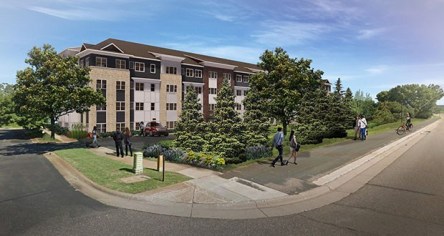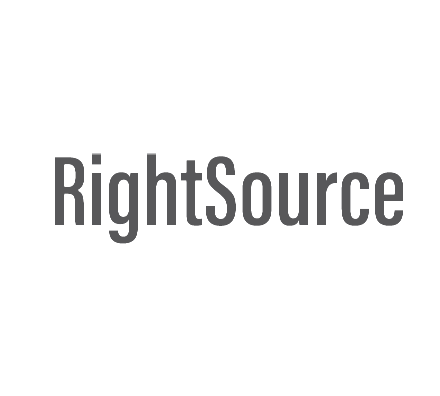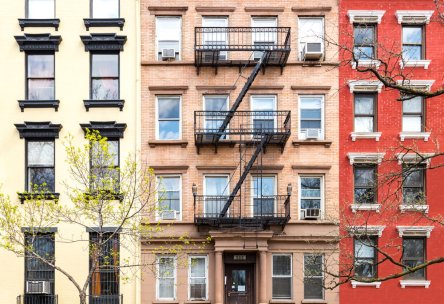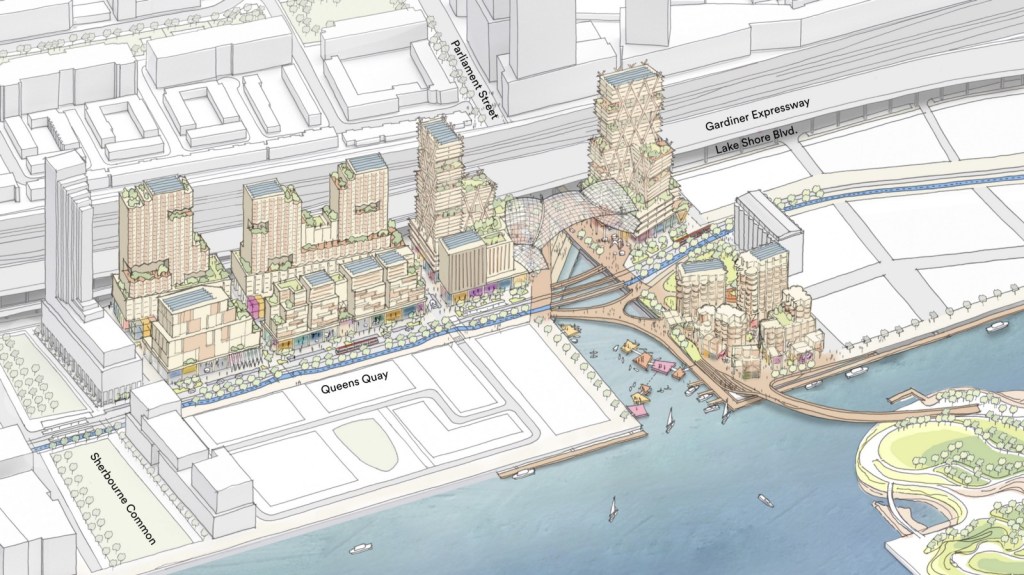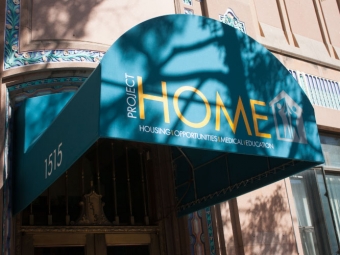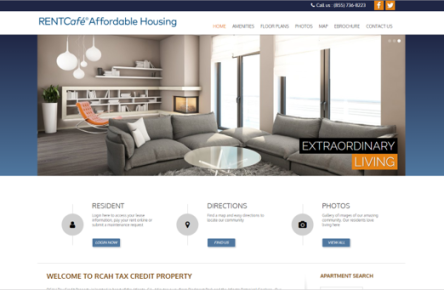What would make affordable housing more affordable? The implementation of cost-saving, sustainable features. Unfortunately, clean tech faces an uphill battle with adaptation in the industry. A national incubator aims to change that. Wells Fargo presents a program that promotes innovation in housing by assisting clean tech companies with an accelerated path to market. Three new residential housing technology companies just joined the incubator this spring—heading to a market near you. 3 The challenge with green innovation in affordable housing Innovative tech startups can have the amazing ideas and the promising products, but they struggle to find funding. Unproven technologies are often seen as a risky investment. The real estate industry is notoriously slow at adapting even proven technologies, which makes the challenge twice as formidable for green building startups. The journey to market is formidable for green startups, but not insuperable. Innovation Incubator (IN2) supports the research and development of the most promising startups. As a result, affordable housing builders and developers can feel more confident about investing in new sustainable housing technologies. IN2: the solution that fosters more solutions IN2 is a dreamchild. It unites the funding and industry savvy of the Wells Fargo Foundation with the research specialists and technology of the U.S. Department of Energy’s National Renewable Energy Laboratory (NREL). The program is part of Wells Fargo Foundation’s $1 billion commitment to affordable housing. Startups selected by IN2 receive $250,000 in non-dilutive funding to hone their innovations. They work side-by-side with experts at NREL and the Donald Danforth Plant Science Center. Such collaborations give startups access to cutting edge research and testing. Startups also receive priceless networking opportunities, and their work is amplified throughout the industry. Since 2014, the program has furnished product validation for 46 companies via NREL or the...
Pennrose Prevails
Affordable Housing in Annapolis
The demolition of a decrepit public housing project in Annapolis, Md., is making way for new memories and a brighter future for families. The project is six years in the making and will boost the quality and quantity of affordable housing in the city. New growth in Annapolis Yardi client Pennrose recently broke ground on the Newtowne 20 project. The redevelopment site will be home to 78 much-anticipated affordable housing units. Families can choose between one-, two- and three-bedroom floorplans. Most units will surround a central garden while others stack the perimeter. A 3,500-square-foot community center, basketball court and playground accentuate the property. “Through persistence and determination, we have reached a great milestone in the rebuilding of this great community,” said Melissa Maddox-Evans, Executive Director/CEO of the Housing Authority of The City of Annapolis during the virtual groundbreaking ceremony. “We thank all of our partners for their hard work and support as we move forward with the construction phase. We are glad our residents will be able to have this opportunity for a new start for themselves and their families.” Patrick Stewart, Regional Vice President at Pennrose said, “We’re excited to continue our partnership with HACA as we transform outdated public housing into a vibrant, pedestrian-friendly neighborhood with high-quality affordable housing, community amenities and open green space.” He continued, “Today’s milestone brings us one step closer to completing this full-scale revitalization and welcoming residents back into their new, modern homes.” Neighborhood revitalization offers new opportunities to existing residents The site of Newtowne 20 is the former home of 810 Brooke Court, a public housing project constructed in 1971. After more than 50 years, the site is receiving a new lease on life with high-quality, energy efficient units. Existing residents of the neighborhood will benefit from...
Health at Home
Vaccinations for HACLA + EAH Residents
As a company grows, it can be challenging to maintain a personal connection with the communities that it serves. When two international chains and a national housing provider behave like good neighbors, communities take note. CVS, Walgreens and EAH Housing have teamed up to provide in-house immunizations for seniors and other vulnerable groups. Rapid changes in senior living communities Seniors have faced unique challenges during the pandemic. To protect vulnerable residents, senior housing providers were required to cancel conventional family visits, group excursions and most daily outings. With ample creativity, staff members helped seniors thrive during quarantine. But undoubtedly, seniors missed time with their families and trips outside of the community. Additionally, seniors had to embrace technology in new ways. Seniors are a tech savvy bunch, and technology adaptation comes with health benefits. The new approach to health care, however, replaced many in-person office visits with telehealth options. Seniors again found themselves on unfamiliar terrain. The COVID-19 vaccine could save lives. It would also provide a safe way for seniors to resume a somewhat normal lifestyle. But with cases on the rise, venturing outside of their communities to access the vaccine posed risks of its own. Senior housing providers such as EAH Housing sought means to bring vaccinations to residents. CVS, Walgreens, and the Center for Disease Control (CDC) answered the call. Walgreens and CVS answer the call to serve seniors Yardi client and affordable housing provider EAH Housing recently announced that residents are receiving Pfizer-BioNTech COVID-19 vaccinations. The initiative is part of an immunization clinic provided by Walgreens and CVS. Residents and staff of Reflections at Barbara Ann in North Hollywood were among the first recipients of the vaccine in January. This month, the site completes the second dose of the program. Reflections...
Tiny Homes
Essential housing
On the surface, tiny homes seem to address the needs of those who need the least. The affluent New Yorker seeking a COVID getaway near the beach, or a recent grad making a name for herself off the grid are the ideal images of tiny house inhabitants. But in (what we hope is) the wake of a pandemic, public health officials and city planners are seeing the value of tiny houses for those in need. The compact panacea This summer, the U.S. faces an interconnected web of high unemployment, a high cost of living near job hubs and seemingly unending wave of COVID-19 infection rates. Those who can are migrating from cities to less populated suburbs in search of space and peace. They’re often taking their remote work with them. But for more than half a million homeless people in the United States and 16.3 million unemployed, that’s not an option. City planners are turning to tiny houses to de-intensify shelter housing, bring people in off of the streets and offer affordable housing for those in need. Additionally, the compact units facilitate social distancing while offering access to private, outdoor space that isn’t readily available in multifamily and public housing. Long term, low-cost tiny houses provides a pathway to homeownership (and potentially, wealth-building equity) for marginalized communities. It took a pandemic to showcase the true value of tiny homes. Affordable housing and homeless services in America are permanently enhanced because of it. Tiny homes improve public health in major metros Seattle was one of the first cities in the US to feel the full force of the pandemic. The city’s vulnerable populations, the homeless and elderly, were the hardest hit. On April 20, Public Health Seattle & King County officials reported 112 COVID-19 infections amongst shelter occupants and staff. Later that month, The Multi-Service Center South shelter in San Francisco reported 96 guests and 10 staff tested positive. As the pandemic spread, major metropolitan reported high infection rates among vulnerable populations. Homeless shelters, traditionally arranged in barrack-style floorplans, did little to slow the spread of the virus. Major metros throughout the nation soon ditched conventional shelter arrangements to promote social distancing: they removed beds to lessen density, and converted hotels and public buildings into emergency shelters. These short-term solutions, however, highlight problems that won’t quickly fade from memory. Homeless shelters are underserved and overpacked. Low-Income Housing Institute’s (LIHI) tiny house villages stood out as a long-term solution. They facilitate public health procedures, foster a sense of safety and autonomy, and have proven to be more cost-effective than conventional shelters. LIHI operates 12 villages serving Seattle, Olympia and Tacoma. The newest community stands in Puget Sound, offering 400 houses that have helped more than 1,000 each year. Two more communities are in the works with at least 50 houses. Each community contains units with less than 100 square-feet. The tiny spaces offer more personal space and privacy than shelters. The houses permit residents to live and sleep more than six feet apart. On-site case managers provide the support residents need while facilitating a path towards permanent housing. The villages pay off for residents as well as city managers. The City of Seattle, for example, funds nine villages. The average cost of tiny house living is only $38 per night. That’s $18-$94 less per night than The City’s current housing options. The construction of the homes is also a cost saver for The City. Shelterforce organizes volunteers to build the homes. Much of the construction can take place off-site in volunteers’ yards when necessary. The free labor reduces home construction costs to $2,500 each. In dire straits, Shelterforce hires contractors who build the homes for $5,500 including labor and materials. In both cases, the per square-foot cost has proven to be more cost effective than conventional shelters. Be Loved Village, Asheville combats homelessness and affordability crisis Asheville has struggled with affordability...
BoKlok
Ikea’s fix for public housing
In the States, we’ve imported several great things from Sweden. Flat-pack furniture makes our rentals feel like home, and True Blood wouldn’t be the same without Alexander Skarsgård. But if you haven’t considered how Swedish imports could improve the quality and availability of subsidized housing, now is the time. The value of inexpensive housing Per a recent survey of 200 metros around the world, 90% of cities are considered “unaffordable.” Average housing prices are more than three-times median incomes in most neighborhoods. In the U.S. alone, The Harvard Joint Center for Housing Studies reveals that 38.9 million households are cost-burdened, spending more than 30% of their income on housing. For low income households, affordable rentals are hard to obtain. In the U.S., there are roughly 36 available affordable units for every 100 extremely low-income renter households. The National Low Income Housing Coalition reports a shortage of 7 million affordable rentals. The National Multifamily Housing Council and National Apartment Association (NAA) express a need for a more conservative 4.6 million new units by 2030. As city planners seek development and housing strategies that offer efficiency, quality and returns, they may find inspiration in Sweden. The BoKlok method could bridge the gap between what cities need, what cities can afford and what low-income renters can pay. Affordable housing, Ikea style BoKlok, a joint venture of Ikea and Swedish construction company Skanska, has successfully completed 11,000 homes throughout Sweden, Finland and Norway. The portfolio includes a senior housing collaboration with Queen Silvia of Sweden. BoKlok brings the IKEA model to senior and affordable housing. The company keeps prices low by focusing on high volume and complete supply chain management: it controls land acquisition, product development and manufacturing. Large volumes and ample repetition facilitate fast turnarounds and low production costs. The venture also controls...
Simplifying Compliance...
Chris Voss Talks Yardi RightSource
How do you reduce the costs of compliance such that affordable housing properties are more attractive to investors, easier for residents to find and qualify for, and less expensive to manage? That’s a question Chris Voss has spent the better part of 20 years answering, and he may just be on to the solution. Chris is Yardi’s vice president of affordable housing and PHA Sales and is the founder or RightSource, the newest addition to the Yardi family. A natural entrepreneur, Chris attended college on the east coast and focused his studies on economics. While there, Chris did some web development work for members of congress, an experience that helped grow his familiarity with emerging online technology. After college, Chris was hired by a consulting firm in Washington, D.C. that supported affordable housing developers and operators. Like many affordable housing professionals, Chris found himself unexpectedly in the industry, but soon realized a passion for its mission and processes. “I joke that growing up I wanted to be a doctor right up to the point that I realized I probably wasn’t patient enough to complete four years of medical school. However, my career does give me some of the experience I was looking for. I’m able to help clients realize their long-term operational goals by diagnosing their challenges and solving them with improvements to technology, processes, and people. So, while I’ve come to terms with not actually becoming a doctor, I have the sense of purpose and fulfilment of helping affordable housing organizations operate with a greater sense of health,” says Voss. The sole focus of the consulting firm Chris worked for in the early 2000’s was support of clients implementing Yardi Voyager. Chris describes his consulting career as a deep dive into affordable housing...
Stable Investment
Future Affordable Housing
Through the best and the worst economic times, affordable housing has emerged as a stable sector. The demand for affordable housing continues to rise while creative private partnerships deliver fresh capital to fill the pipelines. With those conditions aligned, affordable housing is an investment that can weather turbulent times. Enduring investments Multihousing News reports a continuing upward trajectory for affordable housing demand. The current pipeline is insufficient to fill the current need, and if recessionary conditions prevail, the demand for affordable housing will continue to drastically outpace supply. While demand may pique investors’ interest, alone it is not enough. Affordable housing may prove to be more beneficial investment than other multifamily assets due to Section 8 vouchers. The rental housing assistance program creates a barrier of protection around privately-owned affordable properties. During tough economic times, Section 8 vouchers limit rent default rates in comparison to market rate housing. The benefit of investing in affordable housing extends beyond ongoing demand and security against defaults. Affordable housing leaders are positioning themselves for longevity and stability. Creative partnerships Public-private partnerships are becoming more prevalent, offering creative solutions for funding, development and property management. Individual firms as well as municipalities have come to rely on public-private partnerships during the ebb and flow of economic trends. Private firms are respected for their ability to complete projects while balancing quality and efficiency. Most commonly, private general contractors will use their connections to development and construction firms to complete projects for local governments. There are, however, exceptions to this dynamic. Yardi client Conifer Realty forged an investment partnership with Belveron Partners that allows Conifer to develop, build, own and manage properties under one roof. Conifer’s investment extends beyond a single project or portfolio to a company-level partnership that is a game-changer...
Building on Success
Impact Management Group
Impact Management Group, LLC has big plans for the future. The affordable housing property development and management company is set to expand its business strategy, and they have the experience, staff and investment in technology to help set themselves up for success. The new venture for Impact is into the fee management service industry. By this effort, Impact will assume property management and affordable housing program compliance responsibilities for properties owned by other parties, in exchange for a management fee. With the experience of managing approximately 1,400 affordable and market rate units across Wisconsin, Impact has a lot to offer clients. Their extensive industry knowledge not only boosts their credibility, but also serves as a valuable asset that potential clients can leverage to make their own affordable housing compliance programs more effective. Impact’s strategy to begin offering management services is to first focus on prospective clients with HUD 50059 units and properties, and then expand into management of portfolios composed of larger numbers of units, including Low Income Housing Tax Credit properties. Compliance mandates for these programs vary, and Impact’s experience will go a long way in helping its clients reduce the complexity of qualifying residents, calculating rents, managing vacant units, reporting to funding sources and more. A portion of Impact’s compliance expertise has been gained by support from RightSource. It’s expected that prospective clients will see how Impact works closely with RightSource and view the relationship as attractive in selecting a fee manager for their properties. “We couldn’t be where we are today without RightSource,” said Lisa Barkelar, vice president of Impact Management. RightSource, recently acquired by Yardi, offers compliance, consulting and training services, and specializes in serving clients of the affordable housing industry. All of RightSource’s software and services are now fully...
H.J. Russell & Co....
Preserving Communities
Imagine that you’ve enjoyed your home for decades: your kids’ growth charts are on a doorframe in the kitchen, you know your neighbors, and your favorite restaurants all know you by name and order. The neighborhood isn’t what it used to be, but it’s your home. Within a matter of years, a wave of new investments transforms your neighborhood. The cost of living increases and property taxes soar. You can no longer afford the home that you’ve nearly paid off, and you face eviction. That is the reality for many long-term residents of metro Atlanta neighborhoods. Neighborhood ascent, or gentrification, is the process of renovating communities that have experienced disinvestment. Through the process, crime rates drop, property values increase, infrastructure and services often improve. Gentrification, however, comes with grave disadvantages for existing residents including higher rents, higher property taxes, exclusion and discrimination. Yardi client H.J. Russell & Co. is an Atlanta-based firm that conducts construction, program management, and property management. It is aligned with sister real estate development firm Russell New Urban Development L.L.C. Together, they fight gentrification and nurture diverse neighborhoods through strategic projects and partnerships. Atlanta gentrification: an ongoing battle for “home” Atlanta is one of the nation’s largest cities for African Americans with 51.85% of the population identifying as Black or African American. It is also among the top 5 fastest gentrifying cities in the U.S. Several benefits come when investors support a brighter vision for a community. Unfortunately, that vision rarely implements practices that reduce out-migration and encourage long-term affordability. Longstanding residents are often excluded from the vision and priced-out of their homes. Neighborhood ascent does not necessitate segregation or displacement. With strategic planning and real estate firms such as H.J. Russell, neighborhoods can benefit from investment without ousting existing...
Mixed-Income Housing
Pennrose + Omni Make History
As the demand for affordable housing continues to rise, local governments form unique partnerships to fill the need with efficiency and quality. Three Jersey City governmental agencies and two Yardi clients have joined forces to execute Bayfront Redevelopment Plan which includes the largest mixed-income housing development in the Tri-State region. A clean slate The significance of the Bayfront Redevelopment Plan begins with its history. The West Side of Jersey City has had it share of ups and downs. The diverse neighborhood is currently experiencing a renaissance as a wave of investors aim to highlight the beauty of the neighborhood’s eclectic nature. The new development will breathe life back into the Hackensack Riverfront, making it a thriving part of the West Side rather than a forgotten nook. Additionally, the new development will provide the neighborhood with the economic stability that accompanies mixed-income housing. Bayfront Redevelopment Plan includes the transformation of the former Honeywell Corporation building which the City acquired in 2016 for $100 million. The site, which will remain in control of the City, will boost the local stock of affordable housing from 5% to 35%. The plan is a leap forward for the neighborhood, and it is a formidable feat. Making the vision into a reality has required the collaboration of multiple entities. Mayor Steven M. Fulop, the Jersey City Redevelopment Agency (JCRA), and the Department of Housing, Economic Development and Commerce (HEDC) represent local governmental agencies. Yardi clients Pennrose, LLC, and Omni America, LLC created the joint venture Bayfront Development Partners, LLC, which will handle development and construction at the site alongside BRP Development Group. Omni: for the love of community Omni is a black-owned firm that acquires, rehabilitates, builds and manages quality affordable housing throughout the United States. The organization, which includes...
Building Economic Resilience...
The Value of Diverse Housing
Is it possible to shorten the fallout of an economic crisis? Researchers at the University of Maryland believe it’s possible. Preventative measures can mitigate the impact of economic downturns by creating neighborhoods that are naturally resilient to variances in economic performance. Diverse neighborhoods, researchers propose, can decrease the rate of foreclosures and sales before and after economic crises strike. What puts homogeneous neighborhoods at risk? After World War II, planners developed neighborhoods with a single income bracket in mind. Like their urban counterparts, these planned communities segregated individuals and families based on their earning power and, occasionally, place of employment. During difficult economic times, neighborhoods that lack diversity are prone to clusters of foreclosures and sales before and after the peak of the recessionary activity. Neighborhoods that relied heavily on one employer also suffered severe spikes in financial difficulties. The homogeneous nature of these neighborhoods left them vulnerable. If one company or industry suffered, the entire neighborhood suffered as well. Neighborhoods with high concentrations of bank-owned and for-sale homes take longer to recover from economic downturns. Residents that struggled with mortgages may have postponed home maintenance in an effort to conserve resources for mortgage payments. As a result, many foreclosed homes show signs of physical deterioration. Additional damages may occur during the eviction process. Neighborhoods with high concentrations of foreclosures and sales experience the devaluation of nearby homes. Additionally, as lender confidence decreases, so will investment in the area. To create neighborhoods that are more resilient in the face of economic trouble, University of Maryland researchers suggest that developers shift to mixed-income housing models. Uncovering the economic disadvantages of homogeneous neighborhoods The study began by creating a data set that logged zoning and foreclosures across 14 metropolitan statistical areas (MSA). Researchers selected MSAs from throughout the...
Creating Comunidad
Yardi client profile
Even before the COVID-19 pandemic, Antonio Marquez’ Comunidad Partners’ properties in Sunbelt markets throughout the U.S. were standouts in the affordable housing sector. Not only did they offer safe and affordable residences for families, but residents of the portfolio’s approximately 10,000 units could take advantage of after school programs, health and wellness classes, financial literacy and tax help courses, and more. Featured at a 2018 Fannie Mae conference hosted by The Atlantic and profiled in this exceptional video posted by Affordable Housing Finance, it’s easy to grasp the sense of community that Comunidad Partners created from its start in 2007 – when Marquez founded the company to invest in underserved workforce and affordable housing communities. Asked often about his “why” for such deep community involvement, Marquez says he was motivated by his family background. As immigrants and entrepreneurs, his parents Juan Antonio and Pamela instilled a strong sense of community responsibility in Antonio Jr. His father began his working life as a vineyard worker, but ultimately started one of the nation’s largest distribution networks of Hispanic foods from his garage. His son learned that with a good idea, and a lot of hard work, amazing outcomes could be achieved. After finishing his undergraduate degree at Cal Poly San Luis Obispo in California, he began exploring the multifamily industry. “I wanted to provide more than just shelter. These are living, breathing souls and families,” Marquez said. “I really boiled down my ‘why?’ to what I took for granted growing up. My parents made sacrifices and were phenomenal in terms of supporting us and providing a quality roof over our head, food on the table, a good education even though we were a low income family. My ‘Why?’ was to provide these same impactful things to...
Compliance While Distant
Resources for affordable housing
The uncertainty caused by the COVID-19 pandemic affects affordable housing providers in many ways. Missed rental income, difficulty documenting residents’ eligibility and ensuring compliance with a suddenly remote team are just three of the challenges faced by the industry. Thankfully, there are assistance resources that can help alleviate the discomfort of change and uncertainty. Yardi is here to help Affordable housing providers have big concerns, and Yardi is committed to help. Here are some questions you may be asking, and follow-up answers from Yardi below: Q: Where can I get information about changing compliance requirements? A: Current Yardi clients can log into Client Central to watch a free webinar titled “How COVID-19 Changes Affordable Housing Compliance.” The recorded demonstrates ways to keep socially distant and while making sure compliance work gets done. Q: How can we accept applications or conduct compliance interviews when staff are working from home? A: It’s possible for households to complete their affordable housing application online, without having to bring paperwork to your office (which is likely understaffed or closed as employees are working from home). Yardi is offering a fast-track implementation of RentCafe Affordable Housing to current Yardi Voyager customers. Clients can be processing online applications and certifications in as little as two weeks. RentCafe Affordable Housing includes online portals for application processing, screening, move-in, initial, interim, and annual certifications, leading practice compliance forms, payment processing, maintenance requests, compliance reporting and more. The fast-track offer is currently limited to 50059 certifications. As we develop additional leading-practice workflows, we will include additional subsidy types. Q: How do you certify the eligibility of new and current residents when they can’t drop off forms and employers are closed? Your housing specialists can use RentCafe to review household, income, asset and expense data submitted through the online applicant portal. Applicants and residents can upload images of bank statements, paychecks, and any other required eligibility documentation. The online interface enables your compliance team to collaborate, even as they work individually from home offices. Q: How can I implement RentCafe when most of our team are working remotely and have limited to no time available to complete the setup of the software? We understand current circumstances may make implementing any new software or processes challenging. To overcome this, we have developed a streamlined guided implementation approach featuring our leading practice certification workflows and forms. As your partner, Yardi will take the lead to complete the necessary configuration and setup and provide remote webinar training and support for your teams enabling them to start using RentCafe Affordable housing in as little as two weeks. Learn more by downloading a free ebook called Five Steps to Revolutionize Affordable Housing Applications and Workflows. Another way to bolster income certification data is to use social service verification screening from Equifax®. That service delivers applicant and resident payroll data, year to date income reports and more as part of the applicant screening and annual recertification processes. Affordable housing providers using Yardi’s ScreeningWorks Pro can access social service verifications on the Yardi Voyager and Breeze dashboard. Q: How do we process rent deferrals? RentCafe includes a new feature that facilitates rent deferrals and doesn’t require in-person meetings. Residents can log into RentCafe to see what options they have for rent deferral, see how a deferral affects their account balance, and keep up to date with changing policies. Watch a free webinar and see how this new rent deferral feature works. Q: How Does the CARES Act support affordable housing? A: The CARES Act includes legislation that offers relief for property owners experiencing reduced revenue from missed rent payments. Specifically, the CARES Act identifies the procedures landlords can take to keep their properties viable despite financial hardships caused by COVID-19. It addresses forbearance of mortgage payments, temporary eviction moratoriums, and more. Now more than ever Affordable housing is a vital resource for communities across the country. As...
Improve Value
4 Ways LIHTC Can Help
By now, you’ve heard about low income housing tax credits (LIHTC). LIHTC can boost revenues up to 9% and offset up to 80% of project costs. But the program brings its own fair share of risks, headaches and complicated paperwork. If you’re considering this funding option for your next project, there are 4 things you should know before diving in. But first, let’s get the know more about why LIHTC is such a valuable resource. The problem: affordable housing shortage The National Low Income Housing Coalition (NLIHC) reports a shortage of 7 million affordable rentals for low-income families. Of eligible families, more than 70% are “extremely low-income households.” That means that they allot more than half of their income to rent payments. Supply growth could ease high rents and potentially alleviate financial strain on many families. Such supply growth would require investors obtain benefits from affordable housing projects. LIHTC steps towards a solution To make affordable housing more appealing, the US government has offered incentives for investors and property managers. These programs offset low rents collected from renters and make it possible for affordable housing to be profitable. The LIHTC program falls into this category. It has promoted supply growth in affordable housing more than any program of its kind. Why is it so successful? The program offers value for investors and property managers: through the state, the program provides tax credits that are sold to investors. Those credits can be used as tax write-offs. They can also be combined with other programs that may make an affordable housing project more profitable. Affordable housing developers can then pursue affordable housing as viable assets, and low-income families can secure a home. Investors have a few options from which to choose. There are two main tiers...
Answering the Call
CommonBond Affordable Housing
Yardi client CommonBond Communities entered 2020 with good news. The St. Paul-based developer reported that four transactions will create 267 affordable homes and renovate of 101 units. These additions brought the 2019 total to a record-breaking 925 housing units at an average cost of $191,000. The cost will include renovation and new construction. With the ink dry on the transactions, work on the new projects is in full swing. Bridging the gap CommonBond is the largest nonprofit developer and manager of affordable housing in Minnesota. The organization also offers self-sufficiency development programs for residents. Though the construction is monumental for the region, CommonBond CEO Diedre Schmidt admits that there is much more to be done. “We are tens of thousands of units behind in Minnesota,” Schmidt said in an interview with Star Tribune. “The support we are starting to get from employers is really critical.” CommonBond is currently collaborating with employers and for-profit developers to close the gap between the supply and demand on affordable housing in the state. New affordable housing construction in Minnesota To achieve its 925 goal, CommonBond has embarked on a series of renovations and new construction. Scott County will be the site of The Willows in Shakopee. The 60-unit community will serve people with incomes that are 50% or less than the area median income. The site addresses the dire need for affordable housing in the area which has experienced a boom in economic development: the county welcomed employers such as Amazon, FedEx, and Shutterfly but struggles to offer housing that accommodates new workers. Employees are forced to seek housing outside of the county and commute to work. About 50% of the jobs in Scott County are filled by people who live outside of the county. In Hennepin County, a...
Avoiding Coliving Pitfalls
Today's rental trends
As a junior, I lived in the Creative Writing Theme House at Agnes Scott College. A beautiful five-bedroom house just outside of campus gave students an opportunity to live and work with like-minded peers. I loved the experience: group meals and activities, weekly poetry readings, and the ability to workshop my short stories with people who “get it.” Too bad I wasn’t a business major. Then I would have seen the coliving trend coming and profited from it. But the experience did successfully foreshadow the pitfalls of coliving. Multifamily property managers, take note. Coliving is trending and is likely here to stay. By avoiding the pitfalls of your competitors, you can optimize your profits for years to come. What is coliving? Coliving is all the rage in multifamily housing. It combines the best aspects of Airbnb’s short-term rentals and city experiences. Coliving quarters include furnished private studios and multi-person shared flats. Depending on the level of luxury, there are private or shared bathrooms. Common areas usually include the kitchen, laundry room, and exterior spaces. Flexible rents make coliving spaces different than dorms or apartments. Yet the key differentiator in the industry is the themed living. Coliving communities unite like-minded renters. Participants are often professionals in a similar field, people interested in exploring a neighborhood or city, or less tactile themes like inclusion. Yardi client Cushman & Wakefiled recently released a detailed national report on coliving. There are a few common features that coliving properties and their residents share: Property managers within major metropolitan areas are seeing the highest demand for coliving. Such locations offer low rents near popular job hubs. The average coliving resident is in their 30s. The average median income of coliving residents is about $60,000 per year. Additionally, there are a few common characteristics among coliving residents: Digital nomads make up a notable portion of coliving residents. Remote workers want social interaction without the confines of an office. Coliving combines the best of apartment living with coworking space. People who have recently transferred to a new city see coliving as a way to make friends and familiarize themselves with the city before establishing roots. Transient employees often turn to coliving to make friends and get to know the city without committing to long-term, pricy leases. Missing the mark: finding the balance between privacy and intimacy Nationwide, surprisingly few people are interested in coliving, reports the National Multifamily Housing Council & Kingsley Associates Resident Preference Survey. Though there is a lot of hype and investment in coliving start-ups, apartment residents aren’t sold on the concept. About 69% of survey respondents said they “definitely would not be interested” in coliving. Why not? Finding the balance between privacy and intimacy is where several coliving developers have missed the mark. Take my stint in a coliving community as an example. We nine housemates valued our time together. We enjoyed cooking together and attending literary events around town. We got to know each other quite well, including dietary preferences and quirks. Unfortunately, there were frequent meetings where we nearly went Jerry Springer on each other over the messiness of common areas, noise control, and guest management. Living with strangers will never appeal to everyone. But for those who have considered the option, privacy and intimacy can make or break a coliving community. Shared bedrooms and bathrooms make it more challenging to control messes and coordinate schedules. There is a greater demand for floorplans with private bathrooms and bedrooms. Privacy resurfaces as a general concern. Sound proofing and other privacy measures in personal spaces increase resident satisfaction. Though prospects value privacy, they also value intimacy. Ideal living arrangements are between four to ten residents. Larger housing groups were perceived as less personable and less desirable. A steady flow of unmonitored guests also interrupts the perception of intimacy. A community can quickly go from cohesive coliving to frat house nightmare without proper controls in...
Making History
Dominium + Affordable Housing
Dorothy Day Place, owned and operated by Catholic Charities of St. Paul and Minneapolis, has made history. With 370 permanent supportive homes and 356 emergency and medical respite beds, it’s one of the largest affordable housing projects in the state. The project is also the largest public-private partnership involving housing in Minnesota history. Dorothy Day Place was made possible in part by a philanthropic collaboration between Catholic Charities and Yardi client, Dominium. New Phase, New Chapter in History Dorothy Day Place wasn’t planned as a record-breaking collaboration. With the first phase complete, Catholic Charities turned its attention to phase two in 2017. Leadership recognized that the ambitious second phase would benefit from the insight and expertise of an experienced developer. Catholic Charities contacted Dominium, one of the country’s largest affordable housing developers and a fellow Minnesota-based organization. The response of Paul Sween, managing partner of Dominium, took Catholic Charities by surprise. Sween offered to develop the second phase of Dorothy Day Place free of charge. Perhaps to Sween’s surprise, the initial request came from the bank. “We instinctively said ‘yes’ to helping with the project when our partner U.S. Bank asked us to do so simply because we knew how important it was to them,” Sween explained in an interview with Housing Finance. “We know the great work of Catholic Charities and how critical the transformation of the property would be to their mission.” Dorothy Day Place broadens the scope of Dominium’s work. Historically, the firm develops and manages affordable housing for people who earn at or below 60 percent of the area median income. The Dorothy Day Place project serves residents with incomes below 30 percent of the area median income. Jeff Huggett, vice president and project partner at Dominium explains, “Every unit...
RightSource Compliance
Acquired by Yardi
Yardi announced this week the acquisition of RightSource Compliance, a Minneapolis-based software consultant and developer that improves the technology experience for affordable housing providers and provides standout compliance solutions. RightSource has developed a successful software solution to assist clients with meeting complex federal and state affordable housing regulations. RightSource software serves affordable housing providers in all 50 states, and in 2019, the company’s software and services were used to help more than 10,000 families move quickly into affordable housing. “Through our integrated services and technology, we’re able to provide site staff the tools and outsourced compliance services needed to complete paperwork efficiently and accurately, which allow families to move in faster and reduce the risks of compliance errors, including late recertifications,” said Chris Voss, president and founder of RightSource. “We started RightSource in 2007 with one simple goal: to reduce the costs and complexity of compliance. Those dollars and time saved can be put right back into the properties to improve resident services and quality of life,” Voss said. The RightSource team of over 50 employees will continue to operate from their existing offices based out of Minneapolis, Minn. “We’re pleased to welcome RightSource Compliance to the Yardi family,” said Gordon Morrell, executive vice president for Yardi. “Affordable housing is an important part of our clients’ portfolios and RightSource’s products, services and the expertise of its staff will be a great enhancement to our affordable housing product line.” About RightSource Compliance RightSource is a technology firm committed to increasing the availability and quality of affordable housing throughout the country by reducing the costs and complexity of compliance. RightSource partners with owners and operators of multifamily real estate to provide software, consulting, training and technology-enabled compliance services for their properties. Together, we help the homeless become housed faster and enable property managers to focus on collecting rents, maintaining the property, and providing resident services by taking away the burden of compliance. Find out more...
Yardi Matrix
Looks at NY Rent Control
Affordable housing advocates hail New York state’s Housing Stability and Tenant Protection Act of 2019 as a life raft for renters in more than 1 million apartments in New York City alone. Other observers, however, regard it as a minefield that will eliminate incentives for building upkeep, remove housing stock from the market, and drive away landlords and investors. A key provision of the law empowers a board to tie rent increases to an inflation-indexed percentage. Owners previously could raise rents 20% when stabilized units were vacated, with deregulation allowed when rent level or resident income thresholds were reached. Another section limits rent increases to cover only $15,000 of improvements over a 15-year period, regardless of actual costs. “New York State has taken a historic step towards a fairer housing system by reforming the rent loopholes that allowed landlords and property owners to harass and displace tenants across the State. By passing this legislation, we are finally delivering equity and justice to our clients and all low-income New Yorkers,” the Legal Aid Society said in a statement. “[The law] makes it likely that no new apartment buildings will rise. It guarantees that existing ones will decay. It will make repairs and upgrades prohibitively expensive for landlords who must eke out puny profits from properties that require major reinvestment, but where they can’t charge enough rent to pay for it,” countered New York Post editorial writer Steve Cuozzo. In July, a month after Gov. Andrew Cuomo signed the bill into law, a coalition of trade associations and building owners filed a federal lawsuit alleging that the legislation is unconstitutional. A new Yardi Matrix bulletin weighs in on the new law. “Market players say that the values of properties with stabilized units dropped anywhere between 20-40...
Chic. Cozy. Smart.
Toronto’s New Smart Neighbourhood
Sidewalk Labs, the urban innovation organization of Alphabet, Google’s parent company, has plans for a new neighbourhood in Toronto. The 800-acre site, Quayside, will be the first of its kind. The Neighbourhood Hip innovation and practicality combine on the streets of Quayside. “Torontonians want more affordable housing, faster ways to get around the city, safer streets for pedestrians and cyclists, [and] a cleaner and healthier environment,” said Jesse Shapins, Sidewalk Labs’s director of public realm. “That’s what we are aiming to do by creating this new neighbourhood.” To fulfill this vision, the site will be composed of mixed-use developments and 12 mass timber buildings up to 30 stories tall. “If the primary load-bearing structure is made of either solid or engineered wood, it’s a mass-timber building,” says Tsay Jacobs director of the Building Technology Lab at Perkins+Will and a member of the International Code Council’s Ad Hoc Committee on Tall Wood Buildings. The recently reimagined building method is a risk, but it bears great promise. Mass Timber + Modular Construction Due to innovations in building technologies, the unique construction style is strong enough to support tall structures with timber frames. It is also non-combustible, a necessity for many existing building codes. Canadian builders lead the industry in mass timber construction. The new Toronto neighbourhood has several experts on hand. In addition to durability and safety, mass timber construction can also be more sustainable. Sidewalk Labs estimates that construction carbon emissions will be 75 to 85 percent less than conventional construction. How? A combination of mass timber construction with modular technologies will allow for a significant portion of the building to take place off site. Modular construction cuts back on street closures, traffic congestion, scaffolding construction, site congestion, and a host of other disruptions and safety hazards. “We can build and manufactured building and have it stacked in a matter of months and have almost none of that disruption,” says Karim Khalifa, Director of Building Innovation with Sidewalk Labs. “By manufacturing, we should be more efficient and be able to drop down the cost to build these buildings.” Modular building also cuts back on the cost of renovations in the future. Modular spaces can be more easily customized as the needs of the resident or tenant change. “I can take a wall panel, make it become unclipped, and a new wall panel will be clipped in. The turnover time now will only be weeks,” says Khalifa. Buildings that permit greater customization may minimize cost construction and urban sprawl. As young families grow into larger families, for example, they may be able to grow in place. Quayside neighbourhoods become fluid, shifting with the needs of the community. “The landlord has the flexibility of taking that unit that might be one bedroom and combining them into family units to keep people on site,” says Leslie Gash, VP Development at Waterfront. Getting Around Getting around will also be more efficient. Quayside plans to connect to light rail for quick transit throughout the metropolitan area. A flexible streetscape is also in the works. Though the plans are not complete, the streetscape will meet Vision Zero guidelines and be suitable for autonomous vehicles. To boost pedestrian transit and cut traffic, covered walkways called “stoas” will help protect walkers from the elements. A floating walkway will connect Quayside with Promontory Park, an anticipated new greenspace. Pedestrians can also access the new Silo Park, which will be the star of the Parliament Slip inlet attraction. Efficiency has been worked into the power infrastructure as well. Grid energy for the buildings will be supported by photovoltaic panels, battery storage, geothermal wells, and sewer heat recovery. The ambitious combination of alternative energies aims to break tradition with neighbourhoods that are dependent upon city utilities. The housing plan breaks barriers, too. Toronto has faced an affordability crisis for years. At least 50 percent of residences will be priced at 40 percent below market rate....
Scalable Growth
Wallick Chooses Yardi
During the recent Yardi Forum for senior living and affordable housing, we sat down with Brandon Carter, director of information technology at Wallick Communities. Brandon has a wealth of knowledge about products from the Yardi Senior Living and Yardi Voyager Affordable Housing suites, and we were thrilled to speak with him in person. Wallick owns and manages affordable housing and senior living properties across the Midwest. More than 20,000 residents live in Wallick units. There are always more units on the way, as Wallick has experienced an average 23 percent growth annually. Wallick has worked with HUD tax credit programs for more than four decades, and has even been ranked first in the nation in affordable housing preservation. To put it plainly, Wallick is a big deal. Read on to learn how Yardi software helps Wallick achieve its mission. Q: Describe the value that Yardi products bring to your company? BC: Yardi has been a great partner for Wallick. Whatever the need, we can almost always find a Yardi product to help us fulfil it. We trust that Yardi is continuously working to develop new and exciting products to help us fulfil our responsibilities towards owners, staff and residents. Q: How does Yardi help to position your company for growth? BC: Having only Yardi software to manage makes Wallick extremely nimble and quickly scalable with growth. The Yardi platform allows us to focus on our associates and residents as we grow, instead of worrying about bringing on new technology. Q: What software challenges did Wallick face before adopting Yardi? BC: Before moving to Yardi, we used multiple pieces of software for our different business needs. That required us to spend additional time and resources bridging data gaps. It also created confusion for new associates...
Project HOME
Yardi client spotlight
If you’ve ever heard of rocker Jon Bon Jovi’s philanthropy on behalf of a Philadelphia non-profit that creates permanent housing and support resources for the city’s homeless population, that was Project HOME. The HOME stands for Housing, Opportunities, Medical and Education. It makes sense that Housing is first in the list, because many homeless advocates consider stable housing to be the most pivotal initial step to getting homeless Americans back on their feet. The organization’s mission statement: “The mission of the Project HOME community is to empower adults, children, and families to break the cycle of homelessness and poverty, to alleviate the underlying causes of poverty, and to enable all of us to attain our fullest potential as individuals and as members of the broader society. We strive to create a safe and respectful environment where we support each other in our struggles for self-esteem, recovery, and the confidence to move toward self-actualization.” It may sound ambitious, but it’s working. Project HOME just celebrated its 30th year and is on track to provide 1,000 units of affordable housing in Philadelphia within a few years. The organization is also a longtime Yardi client. We recently caught up with Patrick Farrell, Project HOME’s business/financial analyst, who is a passionate advocate for the non-profit’s use of the Yardi affordable housing platform. Farrell has worked on Project HOME’s Yardi platform for the last six years – the organization has used the software for about twice that duration. “Yardi is the workhorse application for us at Project HOME,” said Farrell, whose job supports the property, accounting and human resources departments of the non-profit. “It is the foundation of all of the other applications that we use throughout our business.” As the organization’s mainstay database, Yardi Voyager data powers all...
HUD Holidays
Yardi Fetes Forms
Who doesn’t enjoy back-to-back holidays, even if they are unknown outside of those who work on affordable housing? The Yardi PHA and Affordable Housing teams in Santa Barbara are furthering the trend of personalized holidays this week. The subject of their celebration? HUD forms 50058 and 50059. Forms 50058 and 50059 are often abbreviated to 58 and 59, which makes May 8th and 9th the appropriate calendar days to celebrate. But what are these forms anyway? In a nutshell, 50058 and 50059 are forms used by the United States Department of Housing and Urban Development (HUD) uses to certify eligibility for housing assistance. And, since HUD is involved, they are quite complicated. So why celebrate them? “Our 5/8 and 5/9 days are a chance to recognize the great work of our PHA and Affordable Housing teams. Sure, numbers from the form are a bit strange to celebrate. Nonetheless, it is a perfect chance to take a couple of days to have some fun,” said Gabrielle Van Horn, director of PHA support for Yardi. Will 5/8 and 5/9 become reoccurring holidays? Check back next year to find out. In the meantime, take a moment to appreciate the resources created by PHAs and affordable housing providers in your community. What better way to celebrate?...
Easing Applications
RentCafe Affordable Housing Helps
Use of Yardi’s RentCafe Affordable Housing platform is skyrocketing. With more than 250,000 units covered nationwide, affordable housing providers, residents and applicants are reaping the benefits of online applications. Historically, affordable housing applications could be characterized as a big homework assignment. Interested households would leave a leasing office with an envelope full of papers to fill out and a checklist of things to find. Later, they’d be tracking down a photocopier for their bank statements, paycheck stubs and other paperwork. RentCafe Affordable Housing replaces that process with a self-service, online app. Applicants can work on their application when they want, and where they want. Instead of a stack of papers, applicants submit PDF’s and digital files. Files are safely stored electronically, not stuffed into a file cabinet. Rather than calling the affordable housing office, applicants can go to online FAQ’s and explainer videos to get their questions answered. Simply put: online applications are a big change and they’re creating a lot of benefits. Just how successful is RentCafe Affordable Housing in revolutionizing the process? Let’s look at the most up to date usage data from actual RentCafe Affordable Housing clients. By the numbers 683: the number of affordable housing applications created online every day, as of April 1, 2019. That’s 683 stacks of paper that don’t exist. That’s 683 (at least) applicant intake meetings that didn’t happen. That’s a lot of savings, and it’s happening 683 times every day. 78 percent: the rate of affordable housing applications that are abandoned before submission. This is a scenario where a high rate of abandonment is a good thing. By putting eligibility requirements and application forms online, applicants can self-screen themselves from the process. This statistic proves that nearly 8 in 10 do. Self-screening is a unique...
Talent Retention
4 Tips for Affordable Housing
It’s no secret that high turnover rates are an industry-wide problem for property management. The revolving door leads to repetitive training and service inconsistencies. Retaining talent minimizes both problems and paves the way for success. Below are four tips for talent retention to help your affordable housing property operate smoothly. Reimagine Training When employees feel overwhelmed and under-educated, you’ve got a recipe for turnover. Minimize the risk with thorough training and easily accessible review courses. “Any organization without savvy and competent employees will face high turnover,” said Jeff Ratchford, Technical Recruiter, SHRM-CP. “Empowered engagement and buy-in starts as early in the on-boarding process as possible. Ensure that employees thoroughly understand their roles and the technology that they’re expected to use.” Online learning software enables staff to learn at their own pace. They can also review materials anytime and anywhere with internet access. Administrators gain insights from course data, which can be used to plan group reviews or acknowledge staff members that excel. Supplement online training with in-house demonstrations and hands-on opportunities. “Each new hire is different. Leadership will benefit from employee training that offers multi-faceted learning techniques,” added Ratchford. Empower Staff Empower staff to play an active role in the development of protocols. Acknowledging, addressing, and correcting current shortcoming creates a more efficient workplace. Additionally, employees remain loyal to companies that value their creativity and insights. If you don’t already have a process in place, create a space for staff to share their challenges. (It may be as simple as a custom email address.) Encourage staff to offer suggestions on how those challenges may be overcome. Review the submissions regularly. Channel the most promising proposals to the applicable leadership. Of equal importance, acknowledge each response even if it is to let the employee know...




